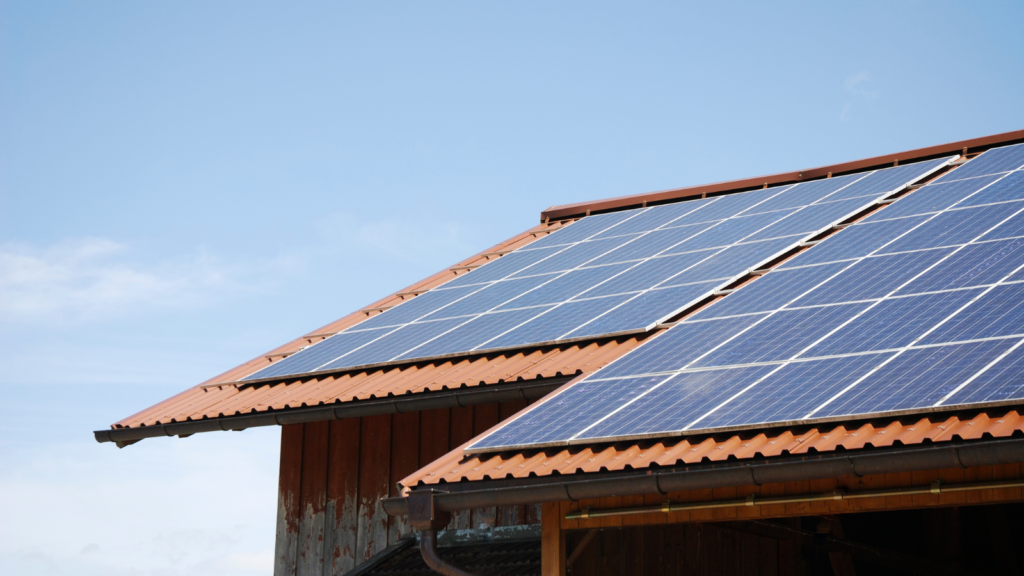How to Slash your Carbon Footprint

Solar panels, electric vehicle, vegetarian diet, avoid flying. What is the biggest step you can take to cut your carbon footprint?
There are a lot of misleading claims about cutting your carbon footprint. Here I try to unravel the truth about our personal carbon footprints. Please note that that these figures are based on averages for the UK. In reality no one is ‘average’. Some consume far more than others.
Buy solar panels
You might think that this will have a big impact, but our electricity grid is already fairly low carbon, so the savings aren’t that large. And, the National Grid has a target to totally decarbonise the grid by 2035.
The average home in the UK uses 2,700 kwh of electricity per year creating 0.7 tonnes of carbon emissions. This could be halved with solar panels, saving 0.35 tonnes of CO2 per year.

An electric car
A modern fuel-efficient petrol car (10,000 miles) emits 2 tonnes per year. An electric car emits zero when being driven, but the electricity required to charge the battery will emit around 0.5 tonnes.
But we also need to take account of the carbon emitted in the manufacture of the car and its battery. This will vary dependent on the weight of the car and where it is manufactured. A petrol car has ‘embedded’ emissions of around 7 tonnes; whilst an electric car, because of its battery, will be considerably more, say 14 tonnes. Over a 14-year lifespan this equates to 0.5 tonne and 1 tonne per year respectively.
Taking these two factors into account, a petrol car creates around 2.5 tonnes per year versus 1.5 tonnes for an electric car. A saving of 1 tonne per year. Your savings will be larger if you buy a smaller, lighter, more efficient electric car (not a SUV).
Electric cars are definitely better than petrol ones, but it is still best to travel less, use public transport, walk or cycle.
Take no flights
Britons fly more than nearly any other nation on Earth. The average emissions are a bit under 1 tonne per person per year, equivalent to a return flight from London to the Canary Islands. Taking no flights would save 1 tonne.
However, the real saving is rather more, as aviation warms the planet more than just from the carbon emissions. For example, emissions are emitted at altitude and contrails can spread to form a blanket of cloud that keeps heat trapped at night.
Also this average masks huge variation. Half of UK citizens take no flights in an average year, and clearly some people take far more. For many people, reducing, or avoiding flying may be the biggest step you can take to reduce your carbon footprint.
A vegan diet
Our typical diet emits around 3 tonnes of carbon dioxide equivalent. This comprises methane from animal husbandry and rice, nitrous oxide from fertiliser, and carbon dioxide from agricultural machinery and transport.
Going vegetarian may reduce this to 2 to 2.5 tonnes, but being vegan may halve it, saving 1.5 tonnes per person per year. Beef and dairy farming have a disproportionate impact on your greenhouse gas emissions, so choosing a vegetarian diet rich in milk, cheese and chocolate is not nearly as impactful as a full vegan diet.
This is a complex area, to read more please click here.

A heat pump
The average household uses 11,500 units of fossil gas which emits 2.2 tonnes of carbon dioxide (plus some leakage of methane). This could be slashed by 73% to 0.6 tonnes with a heat pump creating a massive 1.6 tonne saving (and will continue to reduce to zero emissions by 2035 when the electricity grid is carbon free).
We need to stop burning so called ‘natural’ gas.
Buy second hand goods
Consumers are very variable in the quantity of goods they buy, but an average carbon footprint from buying furniture, clothes, electrical goods, manufactured products and buying ‘stuff’ is 3 tonnes per person per year. Of course, there are things that may not be practical to buy second hand such as cleaning products, toiletries and underwear.
One study showed that buying second hand clothes reduced the carbon footprint by 70 times. Similarly, buying a refurbished second-hand mobile phone will create a negligible additional carbon footprint.
As good, or perhaps better, is simply to buy less ‘stuff’ or keep things for longer. Keeping a mobile phone for 4 years, instead of a typical 2-year contract, will halve the environmental footprint from its manufacture.
Overall, buying second hand has a negligible additional impact so a saving of over 2 tonnes is possible.
Summary
Solar panels 0.35 tonnes
Electric vehicle 1.0 tonnes
No flights 1.0 tonnes +
Vegan 1.5 tonnes
Heat pump 1.6 tonnes
Second hand goods 2.0 tonnes
I guess this shows that electric vehicles are not a panacea, solar panels are good (but a heat pump is more significant), your choice of diet is very important and reducing our consumption of new products can make a big difference.
Neil’s book, Carbon Choices, on the common-sense solutions to our climate and nature crises, is available direct from http://www.carbonchoices.uk/index.php/buy. Neil is donating one third of profits to rewilding projects.
Republished with permission from: http://www.carbonchoices.uk/index.php/blog/blog-53







